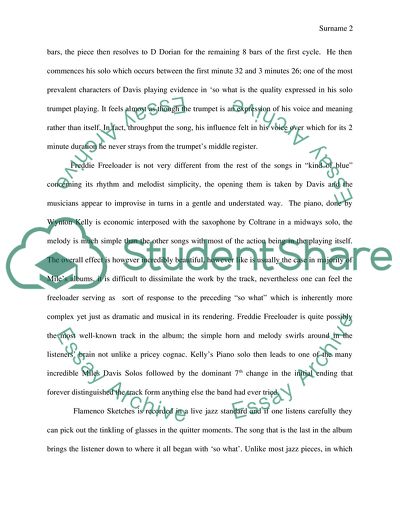Cite this document
(Kind of Blue Analysis by Miles Davis Essay Example | Topics and Well Written Essays - 1250 words, n.d.)
Kind of Blue Analysis by Miles Davis Essay Example | Topics and Well Written Essays - 1250 words. https://studentshare.org/music/1835691-album-analysis-paper
Kind of Blue Analysis by Miles Davis Essay Example | Topics and Well Written Essays - 1250 words. https://studentshare.org/music/1835691-album-analysis-paper
(Kind of Blue Analysis by Miles Davis Essay Example | Topics and Well Written Essays - 1250 Words)
Kind of Blue Analysis by Miles Davis Essay Example | Topics and Well Written Essays - 1250 Words. https://studentshare.org/music/1835691-album-analysis-paper.
Kind of Blue Analysis by Miles Davis Essay Example | Topics and Well Written Essays - 1250 Words. https://studentshare.org/music/1835691-album-analysis-paper.
“Kind of Blue Analysis by Miles Davis Essay Example | Topics and Well Written Essays - 1250 Words”. https://studentshare.org/music/1835691-album-analysis-paper.


